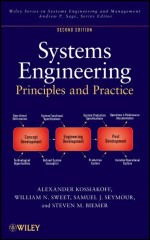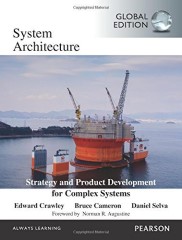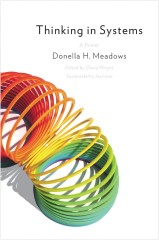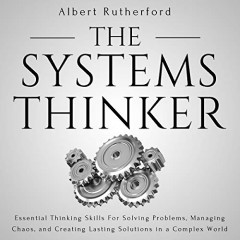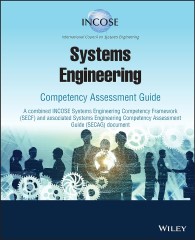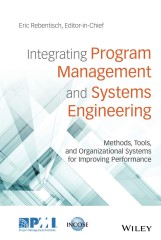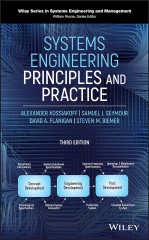Systems engineering is the backbone of complex project development, from aerospace to software systems. At its core lie two critical elements: requirements and artifacts. These components form the foundation upon which successful projects are built, ensuring that stakeholder needs are met and that the final product aligns with its intended purpose.
Requirements serve as the north star, guiding the entire development process. They define what a system must do, how it should perform, and under what conditions. Without clear, well-defined requirements, projects risk veering off course, resulting in costly rework, dissatisfied stakeholders, or even project failure.
Artifacts, on the other hand, are the tangible or intangible work products created throughout the development lifecycle. They document, support, and help implement requirements. From design specifications to test results, artifacts provide evidence of progress, facilitate communication among team members, and serve as a record of decisions made during the project.
Table of Contents
- Overview of the article’s content
- The evolving landscape of systems engineering
- Understanding Requirements
- Exploring Artifacts
- The Relationship Between Requirements and Artifacts
- Lifecycle Management
- Verification Process
- Stakeholder Involvement
- Tools and Techniques
- Methodologies and Approaches
- Best Practices
- Roles and Responsibilities
- Metrics and Measurement
- Conclusion
Overview of the article’s content
This comprehensive guide will delve into the intricate world of requirements and artifacts in systems engineering. We’ll explore their definitions, relationships, and best practices for management. The article will cover:
- Detailed explanations of requirements and artifacts
- The complex web of relationships between them
- Lifecycle management and verification processes
- Stakeholder involvement and communication strategies
- Tools and methodologies for effective management
- Real-world applications and case studies
- Future trends and emerging technologies in the field
Whether you’re a seasoned systems engineer or new to the discipline, this guide aims to provide valuable insights and practical knowledge to enhance your project management skills.
The evolving landscape of systems engineering
The field of systems engineering is not static; it continues to evolve rapidly in response to technological advancements and changing project complexities. Traditional waterfall approaches are being complemented or replaced by agile and hybrid methodologies. The rise of artificial intelligence and machine learning is opening new possibilities for requirements analysis and artifact management.
Moreover, the increasing interconnectedness of systems presents both opportunities and challenges. Systems of systems are becoming more common, requiring engineers to think beyond individual components and consider broader interactions and dependencies.
As we navigate this changing landscape, the fundamental importance of requirements and artifacts remains constant. However, our approaches to managing them must adapt. This article will not only cover the foundational principles but also explore how the discipline is evolving to meet the demands of modern engineering projects.
By mastering the intricate web of requirements and artifacts, systems engineers can drive project success, ensure stakeholder satisfaction, and navigate the complexities of today’s technological landscape. Let’s embark on this journey to unravel the complexities and harness the power of effective requirements and artifact management in systems engineering.
Recommended Further Reading Amazon BooksUnderstanding Requirements
Requirements are precise statements that define what a system should do, how it should perform, and under what conditions. They serve as the foundation for system design, development, and verification. The primary purpose of requirements is to:
- Clearly communicate stakeholder needs and expectations
- Provide a basis for estimating costs and schedules
- Establish the framework for system validation
- Facilitate agreement among stakeholders, developers, and end-users
Types of requirements
Requirements can be categorized into several types, each serving a specific purpose in the system development process:
| Requirement Type | Description | Example |
|---|---|---|
| Functional | Define specific behaviors or functions of the system | “The system shall authenticate users before allowing access” |
| Non-functional | Specify criteria for system operation | “The system shall respond to user input within 0.5 seconds” |
| User | Describe user needs and expectations | “Users shall be able to reset their password without contacting support” |
| System | Define overarching capabilities of the entire system | “The system shall integrate with existing inventory management software” |
| Business | Align with organizational goals and constraints | “The product shall comply with GDPR regulations” |
| Interface | Specify how the system interacts with external entities | “The system shall use REST API for communication with the payment gateway” |
Characteristics of good requirements
Effective requirements share several key characteristics, often summarized by the acronym SMART:
- Specific: Clearly state what is needed without ambiguity
- Measurable: Can be quantified and tested
- Achievable: Realistic within the project constraints
- Relevant: Directly related to the project goals
- Time-bound: Include a timeframe for implementation when applicable
Additionally, good requirements should be:
- Traceable: Linked to their source and to other related requirements
- Consistent: Not in conflict with other requirements
- Complete: Fully describe the needed functionality
- Verifiable: Can be confirmed through inspection, demonstration, or testing
Common misconceptions about requirements
Despite their critical role, requirements are often misunderstood. Some common misconceptions include:
- “Requirements are set in stone”: In reality, requirements often evolve as the project progresses and stakeholders gain new insights.
- “More requirements mean a better product”: Excessive or unnecessary requirements can lead to scope creep and project delays.
- “Technical specifications are the same as requirements”: While related, specifications detail how requirements will be implemented, not what needs to be achieved.
- “Requirements gathering is a one-time activity”: Effective requirement management is an ongoing process throughout the project lifecycle.
- “All stakeholders understand requirements the same way”: Different stakeholders may interpret requirements differently, necessitating clear communication and validation.
Understanding these aspects of requirements is crucial for effective systems engineering. By grasping their types, characteristics, and common pitfalls, engineers can lay a solid foundation for successful project development and execution.
Recommended Further Reading Amazon BooksExploring Artifacts
In the intricate world of systems engineering, artifacts serve as the tangible manifestations of our progress and decisions. These work products, whether digital files or physical documents, play a crucial role in bringing a system from concept to reality. They are the breadcrumbs that guide us through the development process, providing evidence of our choices and serving as touchstones for communication among diverse stakeholders.
Consider the vast array of artifacts that might be produced during a project’s lifecycle. Requirements specifications lay out the roadmap for what must be achieved. Design documents translate those requirements into actionable plans. User manuals bridge the gap between complex systems and end-users. Each artifact type serves a unique purpose, yet all are interconnected in the grand tapestry of system development.
The importance of effective artifact management cannot be overstated. It’s not merely about keeping files organized; it’s about maintaining the narrative thread of a project’s evolution. When managed well, artifacts become powerful tools for traceability, allowing teams to track decisions back to their origins and forward to their implementations. They facilitate version control, ensuring that everyone is working from the same page. In the face of audits or compliance checks, well-managed artifacts stand as a bulwark of evidence, demonstrating due diligence and methodical progress.
Yet, it’s crucial to distinguish between requirements and artifacts. While requirements define the ‘what’ of a system – its needed capabilities and constraints – artifacts often show the ‘how’. They are the means by which requirements are elaborated, implemented, and verified. This distinction, though sometimes subtle, is fundamental to maintaining clarity in project communication and execution.
The definition and importance of artifacts can vary significantly across industries and methodologies. What’s considered a critical artifact in aerospace engineering might be less emphasized in software development. This variability underscores the need for flexibility in artifact management approaches. A one-size-fits-all solution rarely suffices in the diverse landscape of modern engineering projects.
The Relationship Between Requirements and Artifacts
The interplay between requirements and artifacts forms the backbone of systems engineering. This relationship is not a simple one-to-one correspondence, but rather a complex web of connections that evolves throughout a project’s lifecycle. At its core, this relationship is about ensuring that what is built aligns with what was envisioned and required.
Linking requirements to artifacts is akin to creating a map of the project’s landscape. Each connection represents a path of accountability and verification. A single requirement might spawn multiple artifacts – a design document, several test cases, and a section of user documentation. Conversely, a single artifact, like a comprehensive test plan, might address and verify multiple requirements.
This many-to-many relationship reflects the true complexity of systems engineering. It acknowledges that real-world projects rarely follow a linear path from requirement to implementation. Instead, they involve a nuanced interplay of ideas, constraints, and solutions, all captured and reflected in the network of requirements and artifacts.
The benefits of maintaining these links are manifold. When a change is proposed, this web of connections allows for rapid impact analysis. Teams can quickly identify which artifacts need updating and which requirements might be affected. This traceability enhances project transparency, allowing stakeholders to see how high-level requirements translate into tangible outcomes.
However, maintaining these relationships is not without its challenges. As projects evolve, keeping links up-to-date can be a daunting task. The sheer number of connections in large projects can be overwhelming, and ensuring consistency across different tools and platforms adds another layer of complexity.
Moreover, artifacts themselves often have interdependencies that extend beyond their links to requirements. A change to a design document might necessitate updates to test cases, user manuals, and even other design documents. Understanding and managing these artifact-to-artifact relationships is crucial for comprehensive change management and maintaining system integrity.
In essence, the relationship between requirements and artifacts is the lifeblood of systems engineering. It’s a dynamic, evolving network that, when properly managed, ensures that the final system not only meets its specified requirements but does so in a way that is traceable, verifiable, and aligned with stakeholder needs.

Lifecycle Management
The management of requirements and artifacts is a dynamic process that spans the entire project lifecycle. As systems evolve, so too must the documents and models that define and support them.
Change is inevitable in any project, and effective lifecycle management ensures that modifications are tracked, assessed, and implemented systematically. This process involves:
- Version Control: Maintaining a clear history of changes to both requirements and artifacts.
- Impact Analysis: Assessing the ripple effects of proposed changes across the system.
- Traceability: Ensuring that relationships between requirements and artifacts remain current.
- Configuration Management: Keeping all project elements aligned and consistent.
The following table outlines key lifecycle phases and the focus of requirements and artifact management in each:
| Lifecycle Phase | Requirements Focus | Artifact Focus |
|---|---|---|
| Conception | Elicitation and definition | Initial high-level documents |
| Design | Refinement and allocation | Detailed specifications and models |
| Implementation | Verification and validation | Code, test cases, prototypes |
| Testing | Compliance checking | Test results, defect reports |
| Deployment | Confirmation of fulfillment | User documentation, training materials |
| Maintenance | Change management | Updated specifications and models |
Managing supplier-provided artifacts adds another layer of complexity. It requires:
- Clear communication of expectations
- Rigorous review processes
- Integration of external items into the existing artifact structure
- Ongoing collaboration to ensure alignment with evolving project needs
Effective lifecycle management of requirements and artifacts is crucial for maintaining system integrity, facilitating smooth development, and ensuring that the final product meets stakeholder needs. It requires diligence, robust tools, and a commitment to ongoing review and update processes.
Verification Process
Verification is a critical step in systems engineering, ensuring that both requirements and artifacts are accurate, complete, and aligned with project goals. The process involves systematic checks and reviews at various stages of development.
Key aspects of the verification process include:
- Requirement Verification: Confirming that requirements are clear, feasible, and necessary.
- Artifact Verification: Checking that artifacts accurately represent and support requirements.
- System Verification: Ensuring the developed system meets specified requirements.
The order of verification is crucial, typically following this sequence:
- Verify artifacts for accuracy and completeness
- Use verified artifacts to verify requirements
- Verify the system against requirements using appropriate artifacts
The following table outlines common verification methods and their applications:
| Method | Description | Typical Use |
|---|---|---|
| Inspection | Manual examination of documents or code | Requirements documents, design specs |
| Analysis | Theoretical or empirical evaluation | Performance models, safety analysis |
| Demonstration | Showing that the system performs as required | User interface functionality, workflows |
| Testing | Systematic execution to detect defects | Software modules, integrated systems |
| Simulation | Using models to predict system behavior | Complex systems, environmental interactions |
The project team plays a vital role in the verification process:
- Engineers conduct technical reviews and tests
- Quality assurance ensures adherence to standards and processes
- Stakeholders participate in reviews and acceptance testing
When discrepancies or non-conformances are identified:
- Document the issue clearly
- Assess the impact on the project
- Develop and implement corrective actions
- Re-verify to ensure the issue is resolved
Effective verification is an ongoing process throughout the project lifecycle. It helps catch issues early, reduces rework, and ensures the final system meets stakeholder expectations. By systematically verifying both requirements and artifacts, teams can build confidence in the evolving system and make informed decisions throughout development.
Stakeholder Involvement
Stakeholder involvement is crucial for successful requirements and artifact management. Effective engagement ensures that the final system meets user needs and business objectives.
Key stakeholders typically include:
- End-users
- Project sponsors
- Domain experts
- Regulatory bodies
- Development team members
The following table outlines stakeholder roles at different project stages:
| Project Stage | Stakeholder Role | Key Activities |
|---|---|---|
| Requirements Gathering | Information Provider | Expressing needs, constraints, and expectations |
| Design Review | Validator | Reviewing and approving design concepts |
| Development | Collaborator | Providing feedback on prototypes and iterations |
| Testing | Evaluator | Participating in user acceptance testing |
| Deployment | Adopter | Providing feedback on system usability and performance |
| Maintenance | Feedback Provider | Suggesting improvements and reporting issues |
Stakeholder Role Explanation
The “Stakeholder Role” column defines the primary function or responsibility of stakeholders at each project stage. These roles indicate how stakeholders contribute to and interact with the project:
- Information Provider: Stakeholders share knowledge, needs, and constraints to shape requirements.
- Validator: They review and approve designs, ensuring alignment with expectations.
- Collaborator: Stakeholders work alongside the development team, offering ongoing input.
- Evaluator: They assess the system’s functionality and usability against requirements.
- Adopter: Stakeholders integrate the system into their workflows and provide real-world usage feedback.
- Feedback Provider: They suggest improvements based on extended use of the system.
Understanding these roles helps project teams engage stakeholders effectively at each stage, ensuring their expertise and perspectives are appropriately leveraged throughout the project lifecycle. It also clarifies expectations for stakeholder involvement, promoting more productive interactions and better project outcomes.
Effective Stakeholder Communication
Effective stakeholder communication techniques include:
- Regular status meetings
- Interactive workshops
- Prototyping and demonstrations
- Formal document reviews
- Surveys and feedback sessions
Balancing stakeholder needs can be challenging, especially when faced with conflicting requirements. Strategies to manage this include:
- Prioritizing requirements based on business value and technical feasibility
- Using trade-off analysis to make informed decisions
- Facilitating negotiation between stakeholders with competing interests
- Clearly documenting decisions and their rationale
Managing expectations throughout the project lifecycle is essential. This involves:
- Setting realistic goals and timelines
- Regularly communicating project progress and challenges
- Being transparent about trade-offs and limitations
- Involving stakeholders in key decision-making processes
By actively engaging stakeholders and managing their expectations, teams can ensure that requirements and artifacts accurately reflect real-world needs. This collaborative approach leads to higher user satisfaction, smoother system adoption, and ultimately, project success.
Recommended Future Learn Short CoursesTools and Techniques
Effective management of requirements and artifacts often relies on specialized tools and techniques. These solutions help teams organize, track, and analyze complex webs of information throughout the project lifecycle.
Key features of modern requirements and artifact management tools include:
- Centralized repositories
- Version control
- Traceability matrices
- Collaboration features
- Automated impact analysis
- Integration with other development tools
The following table compares different types of tools:
| Tool Type | Primary Use | Advantages | Limitations |
|---|---|---|---|
| Dedicated RM Software | Comprehensive requirements management | Robust traceability, specialized features | Can be complex, potentially costly |
| ALM Platforms | Integrated lifecycle management | Seamless integration across processes | May be overkill for smaller projects |
| Spreadsheets | Simple tracking and organization | Familiar, low cost | Limited scalability, prone to errors |
| Wiki Systems | Collaborative documentation | Easy to use, good for knowledge sharing | Less structured, limited traceability |
| Model-Based Tools | Visual representation of systems | Intuitive for complex systems, supports simulation | Steep learning curve, can be expensive |
Emerging technologies are reshaping the landscape:
- AI and Machine Learning: Enhancing requirement quality, predicting impacts, and automating traceability.
- Natural Language Processing: Improving requirement clarity and consistency.
- Cloud-based Solutions: Enabling real-time collaboration and easier scalability.
While tools are invaluable, they’re not a silver bullet. Effective use requires:
- Proper training and adoption across the team
- Tailoring processes to align with tool capabilities
- Regular audits to ensure data quality and consistency
- Integration with existing workflows and methodologies
It’s crucial to select tools that match the project’s scale, complexity, and team expertise. While powerful platforms offer comprehensive features, they may introduce unnecessary complexity for smaller projects. Conversely, simple tools like spreadsheets, while familiar, often fall short for large, complex systems.
By leveraging appropriate tools and techniques, teams can significantly enhance their ability to manage requirements and artifacts effectively, leading to more successful project outcomes.
Methodologies and Approaches
Different methodologies in systems engineering affect how requirements and artifacts are managed. Each approach has its strengths and is suited to different types of projects.
| Methodology | Key Characteristics | Approach to Requirements and Artifacts |
|---|---|---|
| Waterfall | Sequential, plan-driven | Detailed upfront documentation, formal change control |
| Agile | Iterative, adaptive | User stories, continuous refinement, minimal documentation |
| V-Model | Verification and validation emphasis | Parallel development and testing activities |
| Spiral | Risk-driven, incremental | Evolving prototypes, progressive elaboration |
| Hybrid | Combines elements of multiple approaches | Tailored to specific project needs |
Adapting practices for various project types:
- Large, complex systems: Formal documentation, rigorous traceability
- Software-intensive projects: Agile methods, automated testing
- Safety-critical systems: Extensive verification, regulatory compliance focus
- Rapid prototyping: Lightweight documentation, frequent iterations
Industry-specific approaches:
- Aerospace: DO-178C for software, emphasis on safety and reliability
- Healthcare: FDA regulations, focus on patient safety and data privacy
- Financial services: Emphasis on security, compliance, and scalability
Choosing the right methodology depends on factors such as project size, complexity, regulatory requirements, and team expertise. Many organizations adopt hybrid approaches, combining elements from different methodologies to best suit their needs.
Best Practices
Implementing best practices in requirements and artifact management is crucial for project success. These practices help ensure clarity, traceability, and effectiveness throughout the development lifecycle.
| Best Practice | Description | Benefits |
|---|---|---|
| Clear Requirement Definition | Use unambiguous language, avoid jargon | Reduces misinterpretation, improves implementation accuracy |
| Traceability | Maintain links between requirements, artifacts, and test cases | Facilitates impact analysis, supports compliance |
| Regular Reviews | Conduct periodic assessments of requirements and artifacts | Ensures relevance, identifies inconsistencies early |
| Version Control | Maintain a history of changes with clear rationale | Supports auditing, enables rollback if needed |
| Stakeholder Engagement | Involve relevant parties in reviews and approvals | Improves alignment with user needs and business goals |
| Automated Tools | Utilize software for management and analysis | Enhances efficiency, reduces manual errors |
| Cross-functional Collaboration | Involve diverse team members in requirement development | Brings multiple perspectives, improves comprehensiveness |
Strategies for managing complex webs of requirements and artifacts:
- Implement a robust classification system
- Use visual tools like mind maps or dependency diagrams
- Conduct regular impact analyses
- Establish clear ownership and responsibilities
- Develop and maintain a project glossary
Common pitfalls to avoid:
- Over-specification: Adding unnecessary detail that constrains solutions
- Neglecting non-functional requirements: Overlooking performance, security, or usability needs
- Inconsistent terminology: Using different terms for the same concept across documents
- Ignoring interdependencies: Failing to consider how changes in one area affect others
- Inadequate validation: Not confirming that requirements truly reflect stakeholder needs
By adhering to these best practices and being aware of common pitfalls, teams can significantly improve their requirements and artifact management processes. This leads to clearer communication, more efficient development, and ultimately, more successful project outcomes.

Real-World Best Practice Example: Defense Industry
The F-35 Joint Strike Fighter program provides an excellent case study in requirements and artifact management best practices within the defense sector.
Best Practice Highlight: Requirements Traceability and Configuration Management
Context: The F-35 program is one of the most complex military aviation projects ever undertaken, involving multiple variants for different service branches and international partners.
Implementation:
- Centralized Requirements Database: A unified system called the Joint Requirements Accountability and Management System (JRAMS) was implemented.
- Hierarchical Structure: Requirements were organized in a tiered structure, from high-level operational requirements down to detailed technical specifications.
- Automated Traceability: Each requirement was linked to related design elements, test procedures, and verification methods.
- Change Impact Analysis: Any proposed change triggered an automated analysis of potential impacts across the entire requirement set and related artifacts.
- Configuration Control: Strict version control and approval processes were established for requirement changes.
Results:
- Enhanced Collaboration: The system facilitated communication between diverse stakeholders, including military branches and international partners.
- Improved Decision-Making: Leadership could quickly assess the implications of proposed changes on cost, schedule, and performance.
- Regulatory Compliance: The robust traceability supported audits and demonstrated compliance with complex military standards.
- Reduced Rework: Early identification of requirement conflicts and dependencies minimized costly late-stage design changes.
Challenges Overcome:
- Scale: Managing over 100,000 individual requirements across multiple aircraft variants.
- Complexity: Balancing sometimes conflicting needs of different service branches and international partners.
- Long-Term Consistency: Maintaining requirement integrity over a multi-decade program lifecycle.
Key Takeaways:
- Invest in robust, scalable tools for large, complex projects.
- Implement automated traceability to manage intricate requirement relationships.
- Establish clear processes for change management and impact analysis.
- Foster a culture of rigorous documentation and configuration control.
This example demonstrates how proper requirements and artifact management can provide a foundation for success even in the most complex and challenging projects. The principles applied in the F-35 program can be adapted to various industries dealing with complex systems and stringent regulatory environments.
Other Real-World Applications
Automotive: Balancing Performance, Safety, and Environment The development of electric vehicles exemplifies the complex interplay of performance demands, safety imperatives, and stringent environmental regulations. Meticulous requirements management has been crucial in balancing these often-competing factors, resulting in vehicles that are not only efficient and safe but also compliant with evolving global standards.
Healthcare: Ensuring Patient Safety and Data Privacy In the high-stakes field of medical device software, robust requirements and artifact management processes have proven indispensable. They ensure that every aspect of the software, from user interface design to data encryption protocols, adheres to the strictest safety and privacy standards.
Aerospace: Meeting International Standards and Interoperability The challenge in satellite communication systems lies in meeting international standards while ensuring interoperability across diverse platforms. Effective management of requirements and artifacts has been key to navigating this complex landscape, enabling the development of systems that function seamlessly across global networks.
Key Lessons Across Industries
- The Power of Early Stakeholder Engagement Early and continuous stakeholder engagement emerges as a critical success factor across all industries. It ensures that requirements accurately reflect user needs and regulatory demands from the outset, minimizing costly late-stage changes.
- Investing in Robust Tools and Processes The importance of investing in robust tools and processes, especially for large and complex projects, is another recurring theme. These investments pay dividends in improved traceability, more efficient change management, and better overall project outcomes.
- Adaptability and Regular Reviews The necessity of regular reviews and adaptability cannot be overstated. In rapidly evolving fields, the ability to quickly adjust requirements and related artifacts in response to new technologies, changing market conditions, or shifting regulatory landscapes is often the difference between project success and failure.
These real-world applications demonstrate that while the specific challenges may vary across industries, the fundamental principles of effective requirements and artifact management remain consistent, driving innovation and ensuring project success in even the most demanding environments.
Roles and Responsibilities
Effective management of requirements and artifacts involves various roles, each with specific responsibilities:
| Role | Responsibilities |
|---|---|
| Systems Engineer | Develop and maintain system-level requirements, ensure traceability |
| Requirements Manager | Oversee requirements process, facilitate elicitation and analysis |
| Artifact Owner | Create and maintain specific artifacts, ensure alignment with requirements |
| Stakeholder | Provide input on needs and expectations, review and approve requirements |
| Quality Assurance | Verify compliance with standards, conduct reviews and audits |
| Project Manager | Ensure resources for requirements activities, manage scope and changes |
| Developer/Engineer | Implement solutions based on requirements, provide feasibility feedback |
Cross-functional collaboration is crucial. Regular meetings, shared tools, and clear communication channels help ensure all roles work effectively together.
Metrics and Measurement
Measuring the effectiveness of requirements and artifact management is essential for continuous improvement.
Key Performance Indicators (KPIs):
- Requirement Stability: Frequency and impact of changes
- Traceability Coverage: Percentage of requirements linked to artifacts and test cases
- Defect Density: Number of defects traced to requirement issues
- Review Efficiency: Time spent on requirement reviews vs. issues found
- Implementation Accuracy: Percentage of requirements correctly implemented
Balancing quantitative and qualitative assessments:
- Use metrics for objective measurement
- Conduct stakeholder surveys for subjective feedback
- Perform regular quality audits on requirements and artifacts
Regulatory Compliance
Requirements and artifacts play a crucial role in demonstrating regulatory compliance:
- Identify applicable regulations early in the project
- Map requirements directly to regulatory standards
- Create specific artifacts (e.g., safety analyses, test reports) to evidence compliance
- Maintain clear traceability between requirements, artifacts, and regulations
- Conduct regular internal audits to ensure ongoing compliance
- Prepare for external audits by maintaining well-organized documentation
Developing Systems Engineering Software
Key considerations for developing requirements and artifact management software:
- Flexible data models to accommodate various project types
- Strong traceability features with visual representation
- Integration capabilities with other development tools
- Customizable workflows and approval processes
- Robust reporting and analytics features
Balancing customization and usability:
- Provide templates and best practice guides
- Allow for configuration without complex coding
- Ensure intuitive user interfaces for wide adoption
Future Trends
The landscape of requirements and artifact management in systems engineering is rapidly evolving, driven by technological advancements and changing project complexities. Artificial Intelligence (AI) is poised to revolutionize the field, offering capabilities for automated requirements analysis and even generation. This technology promises to enhance the quality and consistency of requirements, potentially reducing human error and increasing efficiency.
Visualization technologies are also making significant inroads. Virtual and augmented reality tools are emerging as powerful means to represent and interact with artifacts, offering stakeholders immersive experiences that can greatly enhance understanding and decision-making processes.
In the realm of data security and distributed collaboration, blockchain technology is garnering attention. Its potential for creating secure, tamper-proof records of requirements and changes could transform how teams manage and track the evolution of complex systems, especially in highly regulated industries.
Natural Language Processing (NLP) continues to advance, with implications for improving requirement quality. These tools can help ensure clarity, reduce ambiguity, and even suggest improvements in real-time as requirements are written.
The Internet of Things (IoT) is bridging the gap between the physical and digital worlds in systems engineering. By integrating IoT data, teams can validate requirements in real-time against actual system performance, leading to more responsive and adaptive systems.
As these technologies reshape the field, preparing for future challenges becomes crucial. Organizations must invest in continuous learning and skill development to keep pace with these rapid changes. Staying informed about emerging technologies and methodologies is no longer optional but a necessity for remaining competitive.
Perhaps most importantly, fostering a culture of innovation and adaptability within engineering teams will be key. The future of systems engineering lies not just in adopting new tools, but in cultivating mindsets that can leverage these technologies effectively, driving innovation in how we conceptualize, design, and manage complex systems.Copy
Conclusion
Effective management of requirements and artifacts is fundamental to successful systems engineering. By implementing best practices, leveraging appropriate tools, and fostering cross-functional collaboration, organizations can significantly improve project outcomes. As the field evolves, embracing new technologies and methodologies will be key to addressing the increasing complexity of modern systems. The future of systems engineering lies in our ability to adapt, innovate, and continuously improve our approaches to requirements and artifact management.
Further Reading and Resources
For readers seeking to deepen their understanding of requirements and artifact management in systems engineering, the following resources are recommended:
- “Requirements Engineering: From System Goals to UML Models to Software Specifications” by Axel van Lamsweerde. A comprehensive guide to modern requirements engineering techniques
- “Managing Systems Engineering Knowledge: A Practical Guide for Project and Organization Success” by Jon Holt and Simon Perry. Focuses on knowledge management in systems engineering, including requirements and artifacts
- “Systems Engineering Book of Knowledge (SEBoK)” published by INCOSE. An online resource covering all aspects of systems engineering
- “The Art of Systems Architecting” by Mark W. Maier and Eberhardt Rechtin. Provides insights into system architecture and its relationship with requirements
Standards and Guidelines:
- ISO/IEC/IEEE 29148:2018 – Systems and software engineering — Life cycle processes — Requirements engineering
- INCOSE Systems Engineering Handbook
- NASA Systems Engineering Handbook (SP-2016-6105 Rev 2)
Professional Associations:
- International Council on Systems Engineering (INCOSE)
- IEEE Systems Council


